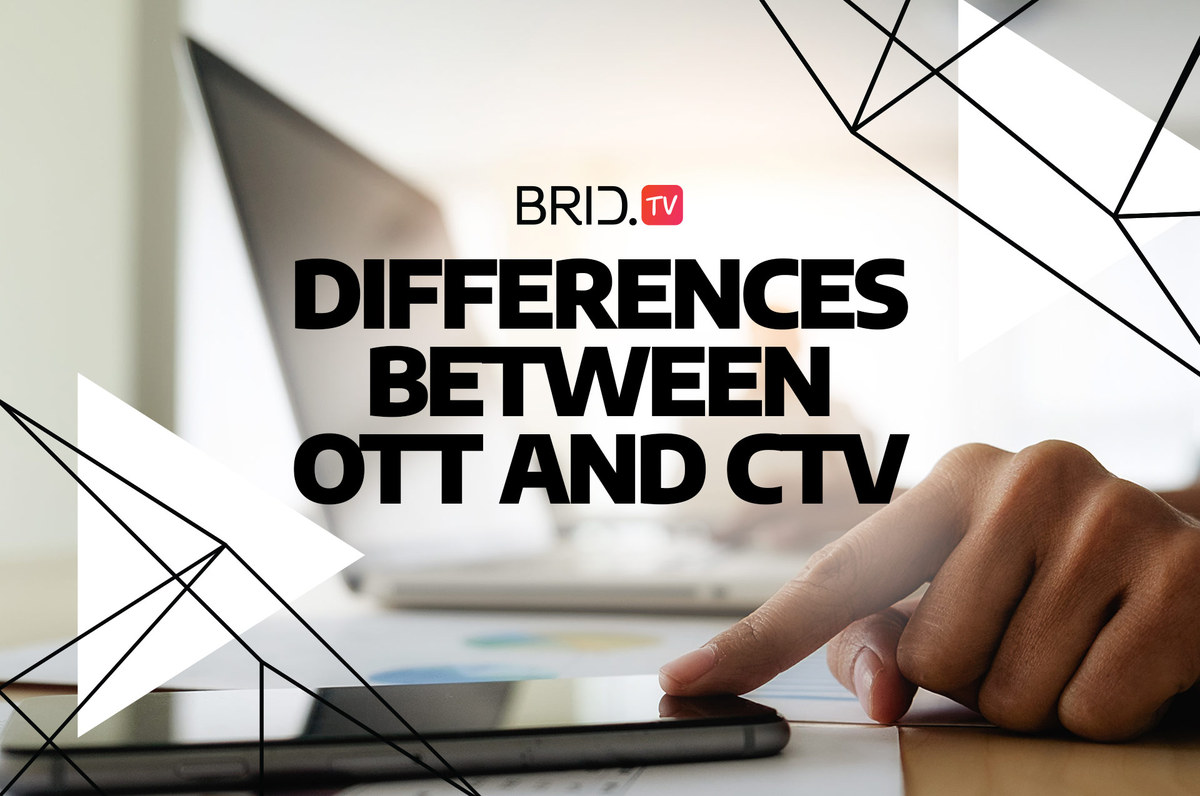The TV industry is slowly but surely losing traction as more and more consumers are turning toward alternative forms of entertainment. Over two million Americans cut the cord in 2019 alone, and that number is growing by the year. But where are all those consumers going? What replacement did they find for traditional TV?
The answer is simple — people are relying on various video streaming solutions like Netflix or Hulu to deliver their favorite content more than ever. According to Deloitte Insights, more people are subscribed to at least one video streaming platform (68%) than traditional television (65%) nowadays. And if you’ve ever heard about any of these platforms, you’ve likely heard the terms OTT and CTV thrown around.
If all of this information is news for you, you likely have no idea what OTT and CTV are. But here’s the thing — even people familiar with them often use these terms interchangeably, and wrongfully so. In reality, OTT and CTV have widely different meanings. Let’s end the confusion once and for all and inspect all the differences between CTV and OTT.
What Is OTT?
OTT means over the top and refers to all types of content and media served over the internet. Since users can now access media content over the web, the need for cable and satellite TV subscriptions is dwindling. That is why many households worldwide have been transitioning to this type of content delivery service.
Another reason OTT has proved so appealing to broad audiences is because of its flexibility. Users can access most OTT streaming services from a wide variety of devices like:
- Smart TVs
- Desktop PCs and Laptops
- Gaming Consoles (PS4, Xbox One, etc.)
- Tablets
- Mobile Phones
- OTT Boxes (Roku Box, Apple TV, Amazon Fire Stick, etc.)
In other words, consumers can use most internet-connected devices to watch their favorite shows through various OTT platforms and applications.
Lately, the term OTT has expanded to encompass all streaming media services that provide digital content online, including music streaming platforms like Spotify or messaging and VOIP apps like WhatsApp, Viber, and Skype.
What Is CTV?
CTV means connected TV and signifies television connected to the internet via an ethernet cable or wirelessly, like IPTV or Smart TVs. However, the term also encompasses all OTT devices that can connect to the TV and have internet access themselves. That way, devices like gaming consoles also fall into the CTV category since they provide second-hand internet access.
OTT vs. CTV
With the evident crossovers within the above definitions, it should be clear why these two terms are often used interchangeably. However, there is a distinct difference between them.
- The term OTT is used to refer to various types of media content that users stream over the internet from various devices.
- The term CTV refers to the devices used to watch video content streamed over the web.
The differences are abundantly clear — the former refers to content, while the latter is used for the devices that content is streamed on. With an increasing number of people subscribing to OTT services by the day, making this distinction is essential to avoid spreading misinformation and understanding the industry better.
What’s the Future of OTT & CTV?
With over 4.3 billion active internet users nowadays, most of the world is already online, and these numbers are only going to keep rising. Since the internet plays such a crucial role in our everyday lives now, people’s lifestyles are changing everywhere.
Today, we live in a fast-paced world where people are used to the commodities of accessibility, which is likely why traditional TV viewership has plummeted over the last decade. It’s evident that consumer content consumption habits have changed and that everyone’s looking for more flexibility. The popularity of mobile video is at an all-time high, and OTT is more prominent than ever. The freedom that OTT solutions offer is likely the industry’s most significant advantage over linear TV. Users don’t have to follow fixed program schedules anymore but can request the content they wish to enjoy at the click of a button.
With the drop in TV viewership also came stagnation in traditional advertising revenue. That is why many advertisers began looking for alternatives in OTT advertising. Luckily for them, the OTT industry proved quite lucrative and has been seeing significant growth ever since. Global OTT ad revenue is even projected to double by 2025!
All of the above are excellent indicators that the future of the OTT & CTV market is bright. It has been rapidly growing for years, and it’s showing no signs of stopping. And now that advertisers have also entered the OTT marketing landscape, its survival is guaranteed.
What do you think? Is OTT the future of media? Will traditional TV survive, or will OTT TV and CTV take over entirely?
We’ll leave it for you to decide…


